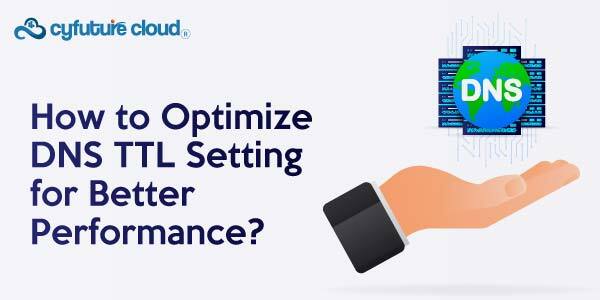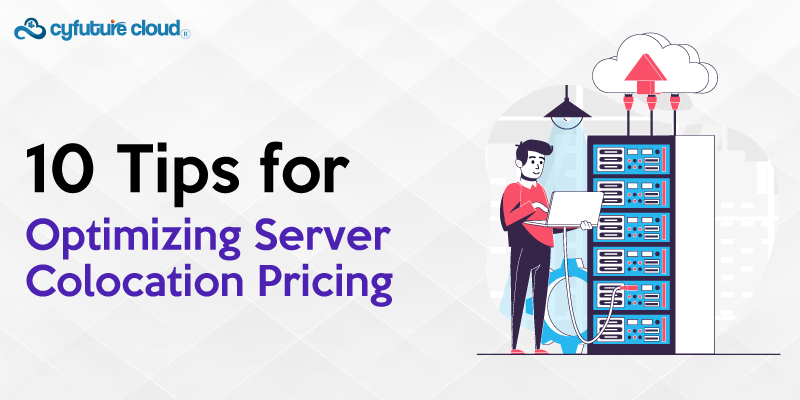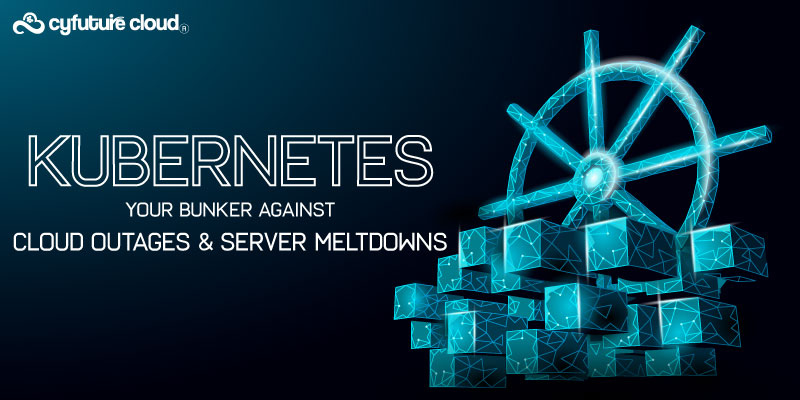Table of Contents
Modernizing your company begins with implementing a hybrid cloud setup. Reaching the cloud can seem insurmountable given the amount of investments and legacy systems involved. Your company can harness the power of the cloud ethically and safely with a hybrid cloud setup, all while maintaining existing investments. Every organisation that employs a hybrid cloud solution will benefit from the best of both worlds thanks to this combined method.
Organizations have both unique possibilities and problems in hybrid cloud infrastructures. You have a choice between private, public, or hybrid cloud architectures once you start planning your architecture.
Learn how hybrid cloud hosting environments operate, the advantages and disadvantages of this configuration, and discuss some best practices for utilising a hybrid cloud setup by taking a look at your organization’s cloud architectural requirements.
What is a hybrid cloud strategy?
An application and service deployment and management strategy for both public and private clouds is known as a hybrid cloud strategy. A hybrid cloud approach is crucial for businesses going through a digital transformation. It concerns how businesses choose which data and apps belong on which components of a hybrid cloud infrastructure.
What happens in the public cloud infrastructure and the private cloud infrastructure are both defined by a hybrid cloud strategy.
Disaster recovery and business continuity (DR/BC) is one of the main applications for a hybrid cloud, where enterprise data and snapshots are saved in the public cloud for quick recovery.
Using public cloud services when demand surges necessitate more processing power for apps during peak usage is another well-liked tactic. This avoids the need to over-provision equipment that would only sometimes be used.
Due to Kubernetes’ recent rise to prominence as the leading platform for cloud-native software, a successful hybrid cloud strategy must take into account how to manage many Kubernetes clusters across various public and private clouds. Within the Kubernetes hybrid cloud environment, easy application mobility is the main objective.
How do you build a Hybrid Cloud Strategy?
Before implementing a hybrid cloud computing approach, businesses must assess their present apps, both new and legacy, to see if any of them would be viable for usage in a public cloud environment.
The cost of virtual machine (VM) subscriptions in comparison to the amortised costs of on-premises infrastructure and the technological advantages of potential cloud providers, such as the ease of integrating hosted and on-premises applications and data, should also be taken into consideration. Security, regulatory, compliance, and data governance requirements should also be considered.
Based on a shared, uniform cloud architecture that spans both public and private clouds and makes orchestration between them easier, such as VMware orchestration tools for virtual machines and Kubernetes for containerized apps, a hybrid cloud strategy should be able to run on both. Workload mobility between private and public clouds should be seamless.
Businesses that adopt standard architecture encompassing both public and private clouds can considerably ease the move to a hybrid cloud environment. Naturally, some programmes are more portable than others; transferring a web front-end application to the cloud is far more challenging than moving a heavily used database.
Also, many cloud service providers (CSPs) impose egress fees for data that is taken out of the cloud and processed after migrating an application to the cloud.
The process for choosing a hybrid cloud strategy, which includes:
Orchestration technologies make it easier for businesses to employ a hybrid cloud strategy by managing the workloads across several clouds, yet changing workloads is still difficult when you don’t have excellent visibility. Before creating your hybrid cloud plan, you might want to learn more about the cloud technology and toolkits you’ll be using.
A hybrid cloud hosting approach aims to build a comprehensive and flexible infrastructure that can support business goals by combining the benefits of both private and public clouds.
The following steps should be followed while implementing a hybrid cloud hosting strategy:
1. Gather your stakeholders:
Make sure you include everyone on your team whose input is needed. Who must help you choose providers, plan workload segments and create a disaster plan? Who else needs to participate and in what capacity?
- To set up your team for cloud implementation, consult with relevant stakeholders such as CIO, CTO, and DevOps team. Ensure effective collaboration among team members with suitable communication and collaborative tools like Lucidscale.
- Encourage team collaboration by providing a means of communication and collaboration, especially for cloud-related tasks. Consider using collaborative tools like Lucidscale to facilitate real-time discussion and review of diagrams and data among team members.
2. Plan your workloads:
To maintain greater control over applications, decide which instances should be hosted in public versus private clouds. Private cloud hosting enables easier adjustments to cloud infrastructure and allows for specialized tools to manage workloads and scale effectively.
- Maximize your hybrid cloud strategy by optimizing workload distribution between public and private clouds. Leverage the flexibility of your hybrid model to achieve the best possible results.
- Use automation and workload management tools, such as Kubernetes, to orchestrate containerized workloads efficiently. Leverage these tools to streamline and optimize your cloud operations.
3. Understand compliance:
Determine if industry-specific cloud compliance standards, such as GDPR, SOC II, PCI, or HIPAA, apply to your organization. Ensure your hybrid strategy complies with relevant regulations to manage and protect your data effectively.
- Mitigate breach risks and ensure data security by following best practices, establishing consistent data types, recognizing organizational responsibility for compliance, planning storage strategies, designating a compliance champion, and using access controls to protect credentials.
4. Research providers:
Think about the cost, storage possibilities, security and compliance tactics, as well as the particular workloads and commercial requirements of your corporation.
- Amazon Web Services (AWS): AWS has the most extensive cloud infrastructure and a well-established list of services.
- Another well-liked option is Cyfuture Cloud, which is safe and scalable. Cloud computing is especially helpful for larger enterprises because it places an emphasis on organisational needs and interoperability.
- GCP: Google Cloud Platform GCP is a suitable choice for many enterprises thanks to its wide range of services and lack of a commitment need. The flexibility of the service may be valued by startups.
5. Consider your budget:
The hardware and software purchases you must make call for careful thought and preparation. Long-term cost savings for your company are possible with the new hybrid cloud architecture if budgeting is planned.
- Recognizing the cost structure Find out how your cloud vendor determines its costs.
- Think about the financial advantages: Among its numerous advantages is better resource management for computers. Think about how this affects your spending plan.
- Imagine its present and future uses: You can plan how your cloud service will scale with your apps by properly visualising your cloud usage.
- Your architecture diagrams should be updated: Update your schematics as necessary. It would be beneficial if you diagrammed your processes as well.
- Control how you use the service: You may manage your cloud budget by carefully planning how you use your cloud services.
6. Preparing for downtime:
As much as $300k per hour, or possibly even more, is lost due to downtime. Given the expenses associated with downtime incidents, managing and limiting your downtime risks makes sense.
- Analyze the cloud architecture you use: You can spot inconsistencies by visualising your cloud architecture and contrasting your actual situation with a blueprint.
- Perform preventive adjustments: You can avoid downtime with proactive architectural maintenance that reflects the requirements of your application.
- Raise your profile: You can see issues with your cloud and incorporate third-party metadata into your diagrams.
7. Plan how you’ll scale:
Your requirements for cloud corporate architecture will probably alter. It’s crucial to create a plan for future scaling.
- Examine your procedures: As you scale, check that your business and IT processes are in line with your cloud architecture.
- Automate workflows where possible: You can grow your workloads and modify how you use the cloud with automation tools and procedures.
- Plan your migrations: If your demands substantially alter in the future, you may need to transfer from one cloud to another.
8. Get cloud visibility:
Having better visibility throughout the setup and management of your cloud architecture and operations makes sure that your team is on the same page and is aware of everything going on in the cloud.
- Integrate real-time data: For a precise overview or analysis of the specifics of your cloud, instantly import real-time data from your cloud into Lucidscale.
- Investigate the pertinent details: With your cloud architecture, filter information to find the most pertinent information.
- In charge of internal compliance Check your cloud governance data quickly to make sure you’re adhering to internal best practices.
By following these steps, you can implement a hybrid cloud hosting strategy that meets the needs of your business and provides a flexible, scalable, and secure infrastructure that can adapt to changing requirements over time.
What are the challenges of Hybrid Cloud Strategy?
While creating a hybrid cloud strategy, there are some obstacles to overcome. For the purpose of identifying risks and exposing hidden value to the corporation, organisations should begin by performing a detailed and in-depth audit of their current applications and data.
Several difficulties with clouds
Several public cloud providers are frequently used in hybrid cloud settings, and by definition, all hybrid clouds have both public and private clouds. It can be difficult to choose which application is best suited to which cloud, and it may take the programme being rehosted for “hidden” costs to become apparent before it is clear how much more expensive it is to run an application in the public cloud than on-premises.
When deployments do not go exactly as anticipated, there is always room for finger-pointing, just like in any environment with several environments. The on-premises private cloud team and one or more public cloud teams must be committed to working closely together to identify the core cause of issues in a hybrid cloud system.
Cloud cost confusion
Unexpected costs for new software licences, fees for VMs that are not being used, and data egress fees, to mention a few, might result from integrating public and private cloud operations. Enterprises should design data flows and application usage when developing a hybrid cloud strategy to reduce CSP costs while maximising performance and overall cost effectiveness.
Scalability challenges
The ability to grow private cloud apps that are protected by on-premises firewalls can be challenging, which is one of the main reasons for using a hybrid approach. Make sure the apps are designed to access public cloud resources when necessary while designing for cloud bursting to the public cloud.
No magic points
Organizations must find the right platforms and technology to enable a hybrid cloud approach.
What are the benefits of Hybrid Cloud Strategy?
Enterprise firms can benefit from a variety of advantages and benefits from hybrid cloud computing, such as:
Better support for a remote workforce
The demand for anytime, anywhere data access, particularly for multinational and remote teams, drives cloud adoption. For these businesses, desktop virtualization is a critical advantage. Hybrid cloud solutions enable on-demand access to applications and services on the public cloud while enabling secure access to crucial data on private servers. As remote work grows more common, adaptable computing environments are crucial for luring top talent and boosting efficiency.
Reduced costs
For businesses concerned about cost, a hybrid cloud is an excellent option. It offers the security and control of private servers while allowing for scalable operations and easy expansion.
By keeping sensitive data on-premise and moving less sensitive data to the public cloud, businesses can save on infrastructure costs and pay only for the cloud services they use. Costs decrease when demand stabilizes, making it a practical and cost-effective solution.
Improved scalability and control
Businesses have more control over their data and are able to adjust to shifting demands and needs thanks to a hybrid cloud environment. Scaling workloads in response to fluctuations is easier with the cloud’s improved automation capabilities. With automated cloud settings, businesses can enhance performance and efficiency by adjusting to variations in demand automatically.
Increased agility and innovation
Hybrid cloud is the preferred option for businesses seeking to increase speed to market. By improving IT performance and adjusting to market trends, it provides a competitive edge. With a hybrid cloud, companies can easily extend workloads to the cloud, test, prototype, and launch new products more quickly without being constrained by on-premise infrastructure.
Business continuity
Hybrid cloud architectures improve business continuity by reducing downtime and lowering expenses. By duplicating critical data to the cloud and ensuring scalability during spikes in demand, a hybrid cloud is an essential component of a business continuity solution. It protects against server overload and slow services, enabling companies to meet demand and avoid downtime.
Improved security and risk management
Hybrid cloud computing enhances data control and boosts security by reducing the risk of data exposure. Businesses can choose where to store their data and workloads based on compliance, regulatory, or security considerations.
Redundant cloud storage is a critical component of disaster recovery and data insurance, standardised by security teams in the hybrid environment. Strong security features like encryption, automation, access control, orchestration, and endpoint security are made possible by the hybrid cloud’s centralised management, which makes it simpler to efficiently manage risk.
Conclusion
For companies looking for the security and control of a private cloud as well as the adaptability and affordability of a public cloud, a hybrid cloud offers a flexible and affordable solution. It enhances productivity and disaster recovery capabilities by leveraging the lower costs of public clouds and the improved security and flexibility of private clouds.
Yet, managing and establishing a hybrid cloud architecture can be difficult. Companies must therefore carefully plan their hybrid cloud strategy.
To reduce the complexity of administering a hybrid cloud, businesses should also employ a designated cloud management platform and automate when possible. Cyfuture Cloud can assist if your company is thinking about implementing a hybrid cloud configuration.
Send this to a friend

 Server Colocation
Server Colocation CDN Network
CDN Network Linux Cloud Hosting
Linux Cloud Hosting Kubernetes
Kubernetes Pricing Calculator
Pricing Calculator
 Power
Power
 Utilities
Utilities VMware Private Cloud
VMware Private Cloud VMware on AWS
VMware on AWS VMware on Azure
VMware on Azure Service Level Agreement
Service Level Agreement 



















